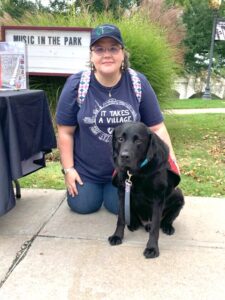Alcohol abuse is leading use of local treatment court
Cases that end up in Warren County’s hybrid Drug/DUI Court tend to skew toward alcohol – though the presence of opioids has grown in recent years.
In recognition of Mental Health Awareness Month, the Pennsylvania Courts recently released an infographic highlighting data from the state’s mental health courts. In 2023, 67% of all discharged participants graduated successfully from these treatment programs and among those graduates, there was a 92% increase in employment.
Mental health courts link key justice system officials with leaders in the mental health system to divert offenders with severe mental illness into a judicially-supervised program. These courts provide a team of court staff and mental health professionals that work together to screen and assess defendants, develop treatment plans and supervise offenders. Mental health courts offer defendants the opportunity to avoid incarceration through the completion of a rigorous program that requires compliance with community supervision and mandated treatment.
Warren County has offered a hybrid drug/DUI court since 2010, but does not offer many of the other courts offered in some other counties, including adult mental health court, veterans courts.
In 2016, there were 10 admissions and nine discharges. Six of the nine discharges successfully completed the program while one was unsuccessful/noncompliant and another person who voluntarily withdrew. Of those who completed the program, one was for heroin, two were for marijuana and three were for alcohol.
Admissions grew in 2017 to 14 admissions and 10 total discharges. Of those who were successfully discharged, one was for heroin and seven were for alcohol. The program’s use grew again in 2018 with 13 admissions and 18 total discharges. Of those 18 discharges, only six were successfully completed, with nine unsuccessful/non-compliant and three listed as “other.”
There were more drugs listed as the reason to be in treatment court in 2018 than any other, with two unsuccessful program participants in treatment court for heroin, two for cocaine (one of whom completed the program successfully), three for opiates (one of whom completed treatment court), two for marijuana (one of whom completed treatment court), five for alcohol (two of whom completed court), and three for methamphetamine, none of whom finished treatment court.
Treatment court admissions began to decrease from the 2018 high water mark. In 2019 there were eight admissions and eight discharges, four of whom successfully completed the program, one of whom was unsuccessful/non-compliant and one who was unsuccessful with a new offense. Drugs listed were heroin (1), cocaine (1), opiates (1, who completed treatment), marijuana (unsuccessful, new offense) and alcohol (three successful program completers and one unsuccessful participant.
Admissions declined again during the COVID-19 pandemic, with six admissions and 12 discharges, seven of which were successful and five that were unsuccessful. 2020 also marked the first year alcohol wasn’t the leading cause of discharges from treatment court. There were four in treatment court for methamphetamine, one who completed the program successfully, and three in treatment court for marijuana, two of whom completed the program successfully. Two participants were in treatment court for alcohol, both of whom completed the program, while one unsuccessful treatment court participant was there for heroin.
There were seven admissions in 2021 and five discharges. Of the five discharges, all were for alcohol; three successful and one who voluntarily withdrew.
Admissions cracked double digits again in 2022 with 10 admissions and five discharges, four of whom successfully completed the program. Alcohol was the leading drug of choice (three, all of whom completed the program) followed by methamphetamine (1, who did not complete the program and, according to the state statistics, absconded) and one unclassified.
In 2023, the last year statistics are available, there were five admissions and seven discharges. Of the discharges five were successful, one was non-compliant and one who was arrested for a new offense. Alcohol remained the leading reason to be in treatment court (3, all of whom completed the program), followed by methamphetamine (2, one who completed the program and one who committed a new offense while in treatment court), heroin (1 who completed the program), and one for opiates who was unsuccessful/noncompliant.
“These courts are a critical part of the judicial system, and recognize that for many people, the underlying criminal intent is inextricably intertwined with other challenges, all which call for both accountability and treatment,” said Pennsylvania Supreme Court Justice P. Kevin Brobson recently. “By combining accountability with compassion, treatment courts are changing and saving lives while strengthening communities in the process.”
Pennsylvania’s first drug court opened in Philadelphia in 1997. Since that time, the treatment court movement in the commonwealth has expanded to include, among others, driving under the influence courts, juvenile drug courts, veterans courts and mental health courts. Currently more than 137 treatment courts are operational across the state, assisting those with substance use disorders, mental health disorders, and co-occurring disorders reach and maintain a recovery-oriented lifestyle, thereby increasing recovery capital in their communities.






